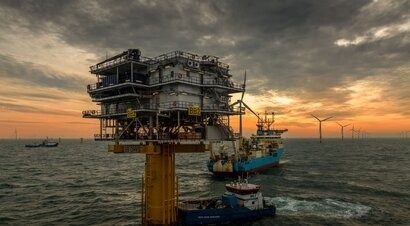
The collaborative industry effort has brought together 38 participating companies (including transmission operators, developers, component suppliers, Engineering, Procurement, Construction and Installation contractors, and yards) to tackle the distinctive challenges associated with floating offshore substations.
Floating offshore wind capacity is projected to exceed 260 GW by 2050, as per DNV's 2023 Energy Transition Outlook (ETO) research. Offshore substations play a crucial role in the scaling of floating offshore wind, serving as hubs to connect multiple wind turbines and transmit renewable energy to markets. Designing and implementing these substations present distinct challenges, including the need for high-voltage dynamic cables and electrical equipment that can withstand the movements of floating structures. With a focus on closing gaps in existing technology and standards applicable to floating substations, the JIP will help the wind industry meet its potential and contribute to the ongoing evolution of the global energy system.
The JIP's Phase 1 primary outcomes include affirming the feasibility of floating offshore substations (FOSS) and export cables, identifying technology gaps requiring attention, and highlighting the maturity of AC solutions compared to DC. The project also carried out a feasibility analysis for generic floater types and dynamic export cable concepts. Emphasising a robust design process for optimised integrated floating substations, DNV plans to incorporate the JIP’s findings in the next update of DNV-ST-0145 for floating substations and of DNV-ST-0359 for dynamic cables, both scheduled for 2024.
“Standards are important in emerging industries as they encourage innovation and competition while ensuring safety and reliability” said Claus Christensen, Senior Chief Specialist at Ørsted and JIP Chairman. “It has been very valuable to work alongside 38 leading companies covering all scopes and disciplines in this project, and we look forward to floating substations being integrated to DNV-ST-0145. As industry gains real project experience from designing and building floating substations, lessons learned need to be incorporated into the standard.”
DNV is now initiating Phase 2 of this JIP, where Phase 1 participants and new participants will be invited to join. Phase 2 will build on Phase 1 deliverables and input received from the contributors.
For additional information:

